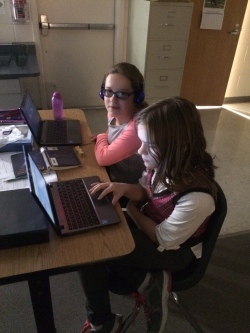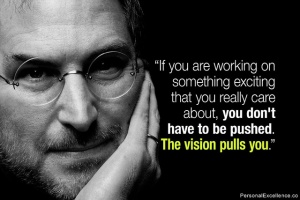
Many readers may be familiar with the Humans of New York, a series that shares interviews with people in New York City. It’s a great way to tell the story of that city from many different points of view.
Here in Vermont, there’s a Twitter handle called @ThisIsVT, where each week, a different Vermont resident shares their story, their view of Vermont, and offers different perspectives of this great state via tweets. The bio for the account changes each week to reflect who is doing the tweeting.
We have a fairly active Twitter hashtag for education and educators in Vermont, #VTed. It’s used for all things education, including tweets from those at meetings and conferences, school or district shares, and as a vehicle for educators to connect and build their PLN. There’s a chat every other Thursday evening at 8 pm EST. We hope educators know that all are welcome, even if you don’t live in Vermont.
 A new Twitter account, @ThisIsVTEd was born in September, building upon the @ThisIsVT idea and expanding it to education. It was an organic evolution among the facilitators & participants in a #VTed chat last year. Each week, a different school or school district takes the helm and tweets out their story, their happenings, and their point of view of education in Vermont. Thanks to Ned Kirsch (@betavt), Jason Finley (@finleyjd), and The Tarrant Institute for Innovative Education (@innovativeEd) for getting the ball rolling with this great idea!
A new Twitter account, @ThisIsVTEd was born in September, building upon the @ThisIsVT idea and expanding it to education. It was an organic evolution among the facilitators & participants in a #VTed chat last year. Each week, a different school or school district takes the helm and tweets out their story, their happenings, and their point of view of education in Vermont. Thanks to Ned Kirsch (@betavt), Jason Finley (@finleyjd), and The Tarrant Institute for Innovative Education (@innovativeEd) for getting the ball rolling with this great idea!
Last week it was our turn in the Williston, VT schools. While we didn’t capture every element of what happens in our schools or even each teaching team, it provides a nice window into what makes our schools special. Here’s a Storify I put together to showcase last week’s tweets from @ThisIsVTEd, as well as tweets and Instagram shares with our schools’ hashtag #wsdvt.
@ThisIsVTEd has rotated to a new ‘tweeter’ this week. Be sure to check out the bio on Twitter to see who is tweeting! Regardless, it’s a fabulous way to see what’s happening in Vermont Education. We’re back to tweeting from our usual account, @wsdvt.


 With our enrichment STEAM teacher, Julie, students programmed BeeBots and also played Robot Turtles, a fabulous board game to build coding skills.
With our enrichment STEAM teacher, Julie, students programmed BeeBots and also played Robot Turtles, a fabulous board game to build coding skills.



















